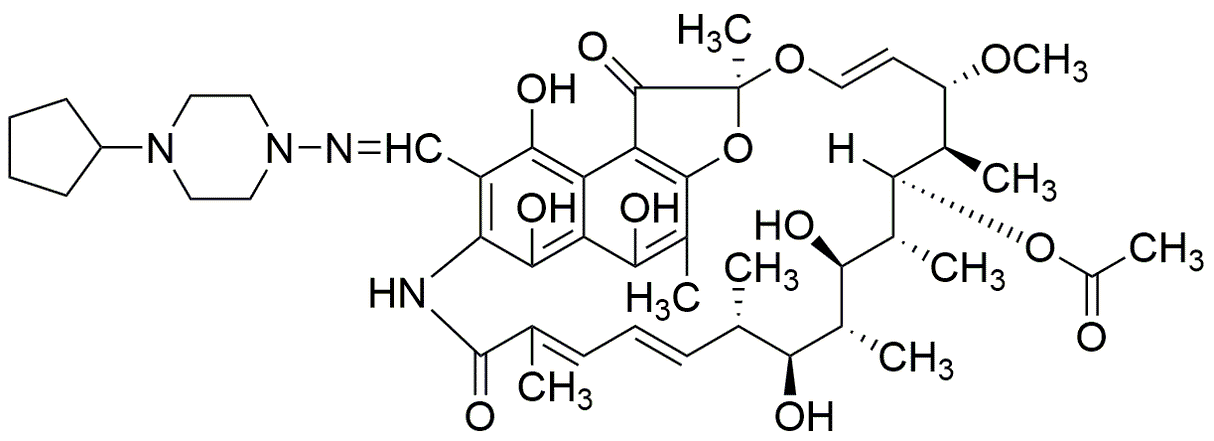Rifapentine is widely utilized in research focused on:
- Tuberculosis Treatment: This compound is primarily used in the treatment of tuberculosis (TB), particularly in combination therapies. Its long half-life allows for less frequent dosing, improving patient compliance.
- Antimicrobial Research: Researchers explore its effectiveness against various bacterial infections, making it a valuable asset in developing new antimicrobial therapies.
- Pharmaceutical Development: Rifapentine serves as a model compound in drug formulation studies, helping scientists understand drug interactions and optimize delivery systems.
- Clinical Trials: It is frequently involved in clinical trials aimed at improving TB treatment regimens, providing data that can lead to more effective therapies.
- Public Health Initiatives: Its role in public health programs targeting TB control in high-burden countries highlights its importance in global health strategies.
General Information
Properties
Safety and Regulations
Applications
Rifapentine is widely utilized in research focused on:
- Tuberculosis Treatment: This compound is primarily used in the treatment of tuberculosis (TB), particularly in combination therapies. Its long half-life allows for less frequent dosing, improving patient compliance.
- Antimicrobial Research: Researchers explore its effectiveness against various bacterial infections, making it a valuable asset in developing new antimicrobial therapies.
- Pharmaceutical Development: Rifapentine serves as a model compound in drug formulation studies, helping scientists understand drug interactions and optimize delivery systems.
- Clinical Trials: It is frequently involved in clinical trials aimed at improving TB treatment regimens, providing data that can lead to more effective therapies.
- Public Health Initiatives: Its role in public health programs targeting TB control in high-burden countries highlights its importance in global health strategies.
Documents
Safety Data Sheets (SDS)
The SDS provides comprehensive safety information on handling, storage, and disposal of the product.
Product Specification (PS)
The PS provides a comprehensive breakdown of the product’s properties, including chemical composition, physical state, purity, and storage requirements. It also details acceptable quality ranges and the product's intended applications.
Certificates of Analysis (COA)
Search for Certificates of Analysis (COA) by entering the products Lot Number. Lot and Batch Numbers can be found on a product’s label following the words ‘Lot’ or ‘Batch’.
*Catalog Number
*Lot Number
Certificates Of Origin (COO)
This COO confirms the country where the product was manufactured, and also details the materials and components used in it and whether it is derived from natural, synthetic, or other specific sources. This certificate may be required for customs, trade, and regulatory compliance.
*Catalog Number
*Lot Number
Safety Data Sheets (SDS)
The SDS provides comprehensive safety information on handling, storage, and disposal of the product.
DownloadProduct Specification (PS)
The PS provides a comprehensive breakdown of the product’s properties, including chemical composition, physical state, purity, and storage requirements. It also details acceptable quality ranges and the product's intended applications.
DownloadCertificates of Analysis (COA)
Search for Certificates of Analysis (COA) by entering the products Lot Number. Lot and Batch Numbers can be found on a product’s label following the words ‘Lot’ or ‘Batch’.
*Catalog Number
*Lot Number
Certificates Of Origin (COO)
This COO confirms the country where the product was manufactured, and also details the materials and components used in it and whether it is derived from natural, synthetic, or other specific sources. This certificate may be required for customs, trade, and regulatory compliance.

